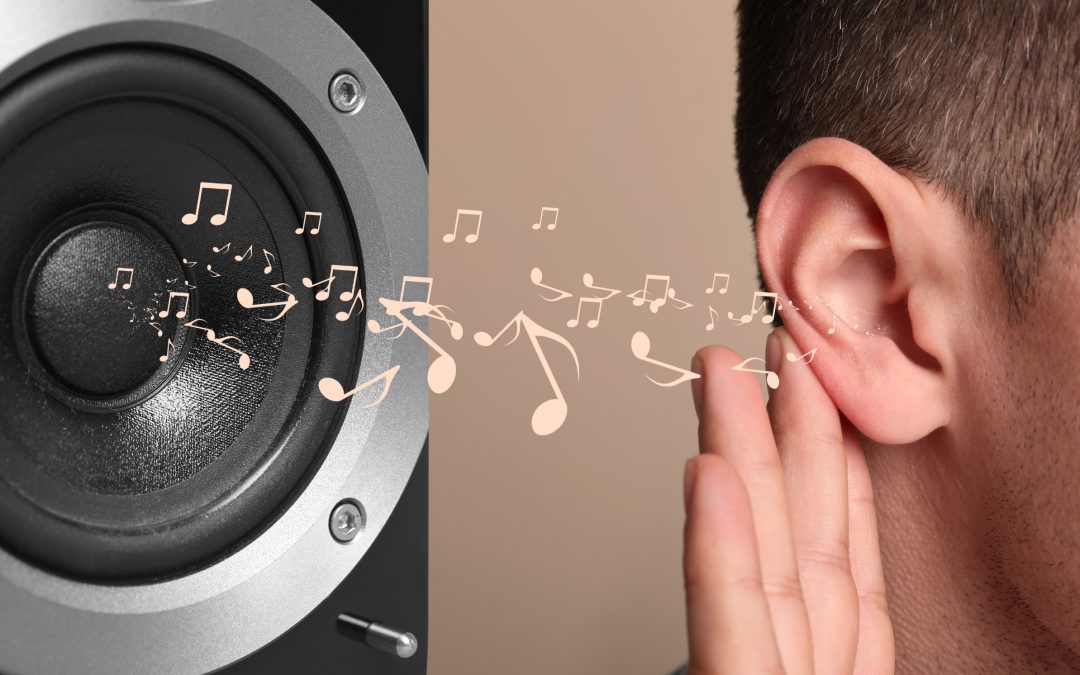Have you ever stopped and wondered what makes human hearing so special? From being able to detect even the subtlest of sounds, to having the ability to process vast amounts of information simultaneously – our auditory capabilities are truly remarkable.
Understanding more about what sets us apart in terms of our hearing functions can help improve research, develop more advanced technologies, and benefit many individuals with hearing loss.
In this blog post, we will explore some key factors that make human hearing unlike any other species on Earth!
The anatomy of the ear and its role in hearing
The ear is a complex and fascinating organ that plays a crucial role in our ability to hear and process sound. Its anatomy is divided into three main parts: the outer ear, middle ear, and inner ear. The outer ear consists of the visible ear canal and the auricle, which is the curved portion of the ear that sits on the side of our head.
The middle ear is home to three tiny bones – the hammer, anvil, and stirrup – that transmit sound vibrations from the eardrum to the inner ear. The inner ear contains the cochlea, a snail-shaped organ that converts these vibrations into electrical impulses that the brain can interpret as sound. Despite its small size, the ear’s intricate and purposeful design is a marvel of biology.
Why do humans have such sensitive hearing compared to other animals?
Humans possess a highly sensitive range of hearing, superior to many other species, largely due to the extraordinary features of our auditory system. Our auditory sensitivity primarily lies in the frequency range from 20 Hz to 20,000 Hz, a range that encompasses the most common sounds we encounter in our daily lives, from conversations to musical instruments.
This wide frequency range allows us to enjoy a rich soundscape and aids in essential tasks such as localising sounds. Additionally, humans have evolved to have a keen sensitivity to sounds in the frequency range of the human voice, which has been crucial for our social and language development.
Furthermore, our brain’s advanced auditory cortex can process and interpret subtle nuances in sound, enabling us to recognise different voices, perceive emotional cues in speech, and appreciate complex musical compositions.
Describe how sound travels from the outer ear to the inner ear
The journey of sound from the outer ear to the inner ear is a fascinating process that demonstrates the remarkable efficiency of our auditory system. It begins when sound waves enter the outer ear, or the auricle, and travel down the ear canal. These waves then strike the eardrum, a thin membrane located at the end of the ear canal, causing it to vibrate.
These vibrations are picked up by the three tiny bones in the middle ear known as the hammer, anvil, and stirrup (or the malleus, incus, and stapes, respectively). These bones amplify the vibrations and transmit them to the inner ear. Here, they reach the cochlea, a fluid-filled, snail-shaped structure.
The vibrations cause the fluid in the cochlea to ripple, stimulating tiny hair cells lining its interior. The movement of these hair cells triggers an electrical signal which is carried by the auditory nerve to the brain. The brain then interprets these signals as sound, whether it be a soothing melody, the voice of a loved one, or the rustle of leaves in the wind.
The three parts of the inner ear and their roles in hearing
The inner ear is a sophisticated structure that plays an integral role in the process of hearing and comprises three main parts: the cochlea, the vestibule, and the semicircular canals.
The cochlea is a spiral-shaped, fluid-filled organ primarily responsible for transforming the vibrations from the middle ear into electrical signals. These signals are then transmitted to the brain via the auditory nerve, which interprets them as sound. The cochlea’s structure is lined with tiny hair cells that move with the fluid vibrations and initiate this electrical signal.
The vestibule, located in the middle of the inner ear, serves as the main hub for the cochlea and the semicircular canals. While its main function pertains to balance rather than hearing, it does house the otolith organs which respond to changes in position or movement and send this information to the brain.
The semicircular canals, arranged in three different planes, are also primarily involved in maintaining balance. They contain fluid and sensory hair cells similar to the cochlea. When the head moves, the fluid within these canals shifts, stimulating the hair cells to send signals to the brain about the body’s motion.
Overall, while the cochlea is specifically involved in hearing, the vestibule and semicircular canals also contribute to our overall auditory experience by providing spatial awareness and maintaining balance, key factors in how we interact with the soundscape around us.
Different types of hearing loss and possible treatments
Hearing loss, a condition that affects millions worldwide can be classified into three main types: sensorineural, conductive, and mixed hearing loss.
Sensorineural hearing loss is the most common type and is associated with damage to the inner ear or the auditory nerve. This can be caused by ageing, exposure to loud noise, certain medications, or illnesses like Meniere’s disease. Treatment options for sensorineural hearing loss often include hearing aids, cochlear implants, and various forms of therapy to help manage tinnitus or balance issues.
Conductive hearing loss, on the other hand, is due to problems with the ear canal, eardrum, or middle ear structures. This type of hearing loss can result from ear infections, tumours, fluid in the middle ear, or even a blockage in the ear canal, such as impacted earwax. Treatment for conductive hearing loss typically involves addressing the underlying issue, whether through medication or surgery and may also include the use of hearing aids.
Mixed hearing loss, as the name suggests, is a combination of both sensorineural and conductive hearing loss. The treatment for this type of hearing loss usually involves a multifaceted approach, addressing the sensorineural and conductive components.
Thanks to advances in medical technology, there are an increasing number of interventions available for those experiencing hearing loss. In addition to hearing aids and cochlear implants, hearing rehabilitation therapies are becoming more tailored and effective.
Future treatments may even include gene therapy, stem cell therapy, or neuroprosthetics, offering hope for a future where hearing loss can be more effectively managed or even reversed.
About Us
At Carlisle Hearing Center, we are dedicated to providing quality care toward improving your hearing health and quality of life. Hearing-related issues can often make you feel alone, but with our technologically advanced, affordable hearing solutions and top-notch advice, you can confidently live your life, assured that we are always looking out for you and your loved ones! Contact us today to schedule your free hearing test and subscribe to our newsletter to learn more about our hearing solutions and the latest updates in the hearing aids industry!

